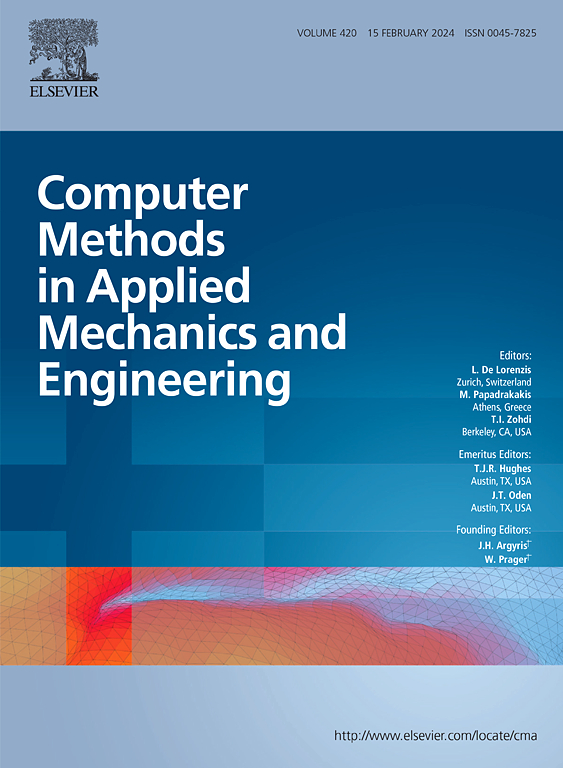Multi-objective Bayesian optimisation of spinodoid cellular structures for crush energy absorption
IF 6.9
1区 工程技术
Q1 ENGINEERING, MULTIDISCIPLINARY
Computer Methods in Applied Mechanics and Engineering
Pub Date : 2025-03-24
DOI:10.1016/j.cma.2025.117890
引用次数: 0
Abstract
In the pursuit of designing safer and more efficient energy-absorbing structures, engineers must tackle the challenge of improving crush performance while balancing multiple conflicting objectives, such as maximising energy absorption and minimising peak impact forces. Accurately simulating real-world conditions necessitates the use of complex material models to replicate the non-linear behaviour of materials under impact, which comes at a significant computational cost. This study addresses these challenges by introducing a multi-objective Bayesian optimisation framework specifically developed to optimise spinodoid structures for crush energy absorption. Spinodoid structures, characterised by their scalable, non-periodic topologies and efficient stress distribution, offer a promising direction for advanced structural design. However, optimising design parameters to enhance crush performance is far from straightforward, particularly under realistic conditions. Conventional optimisation methods, although effective, often require a large number of costly simulations to identify suitable solutions, making the process both time-consuming and resource intensive. In this context, multi-objective Bayesian optimisation provides a clear advantage by intelligently navigating the design space, learning from each evaluation to reduce the number of simulations required, and efficiently addressing the complexities of non-linear material behaviour. By integrating finite element analysis with Bayesian optimisation, the framework developed in this study tackles the dual challenge of improving energy absorption and reducing peak force, particularly in scenarios where plastic deformation plays a critical role. Leveraging scalarisation and hypervolume-based techniques, the framework effectively identifies Pareto-optimal solutions that balance these conflicting objectives while accounting for the complexities of plastic material behaviour. Importantly, the approach also prevents problematic densification, ensuring structural integrity during impact. The results not only demonstrate the framework’s ability to outperform the NSGA-II algorithm but also highlight its potential for wider applications in structural and material optimisation. The framework’s adaptability to various design requirements underscores its capability to address complex, multi-objective optimisation challenges associated with real-world conditions.
求助全文
约1分钟内获得全文
求助全文
来源期刊
CiteScore
12.70
自引率
15.30%
发文量
719
审稿时长
44 days
期刊介绍:
Computer Methods in Applied Mechanics and Engineering stands as a cornerstone in the realm of computational science and engineering. With a history spanning over five decades, the journal has been a key platform for disseminating papers on advanced mathematical modeling and numerical solutions. Interdisciplinary in nature, these contributions encompass mechanics, mathematics, computer science, and various scientific disciplines. The journal welcomes a broad range of computational methods addressing the simulation, analysis, and design of complex physical problems, making it a vital resource for researchers in the field.

 求助内容:
求助内容: 应助结果提醒方式:
应助结果提醒方式:


